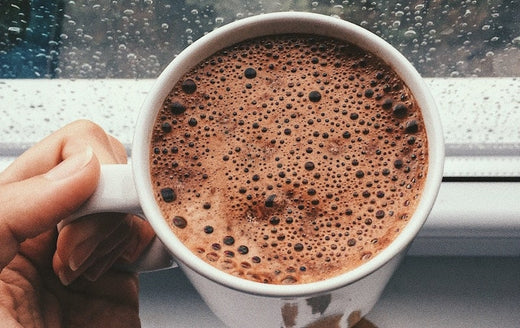Welcome to a fascinating journey into the world of ancient rituals and modern mindfulness!
In this post, we will be exploring the captivating practice of a Cacao Ceremony.
A sacred and powerful ritual, this ceremony is rooted in the deep traditions of the Mayan and Aztec cultures and has been gaining popularity in recent times as a way to connect with oneself, others, and the earth.
The cacao bean, the key ingredient in chocolate, holds a special place in the hearts and minds of those who partake in this ceremony.
As we delve deeper into the history, spiritual significance, and healing properties of cacao, we invite you to open your mind and heart to the transformative experience that awaits.
So, grab a cup of warm cacao, get comfortable, and let's embark on this enlightening journey together.
What Is A Cacao Ceremony?
A Cacao Ceremony is a spiritual ritual that involves consuming ceremonial-grade cacao in a group setting to facilitate connection, healing, and self-exploration.
It originates from ancient Mayan and Aztec traditions and has gained popularity in modern times for its ability to promote mindfulness and personal growth.
(You might also like to read this post asking: What is Blonde Chocolate?)
What Are the Benefits of Cacao Ceremonies?
Cacao Ceremonies offer a range of physical, emotional, and spiritual benefits, making them a popular choice for people seeking personal growth, healing, and connection. Some of the key benefits include:
-
Emotional Healing: Cacao is believed to open the heart and help release emotional blockages, allowing participants to process and heal from past traumas or emotional pain.
-
Deepening Connections: Sharing cacao in a group setting can foster a sense of connection and unity among participants, encouraging open communication, empathy, and support.
-
Enhanced Meditation and Mindfulness: The mild psychoactive effects of ceremonial-grade cacao can help participants achieve a deeper, more focused state of meditation, facilitating self-awareness and personal growth.
-
Stress Reduction: Cacao ceremonies often incorporate calming practices like meditation, breathwork, and gentle movement, which can help reduce stress and promote relaxation.
-
Boosted Creativity: The stimulating effects of cacao on the mind can enhance creative thinking and problem-solving abilities, making it an ideal tool for artistic expression or brainstorming sessions.
-
Physical Health Benefits: Ceremonial-grade cacao is rich in antioxidants, magnesium, and other essential nutrients that can improve cardiovascular health, reduce inflammation, and support overall well-being.
-
Spiritual Growth: Cacao ceremonies provide an opportunity to explore one's spirituality, connect with inner wisdom, and experience a sense of oneness with the universe.
It's essential to remember that individual experiences may vary, and the benefits one derives from a cacao ceremony can depend on personal intention, openness, and the specific practices incorporated into the ritual.
(You might also enjoy reading this post: Why is Fairtrade chocolate important?)
What is the History of Cacao Ceremonies?
The history of Cacao Ceremonies dates back to ancient Mesoamerican civilizations, particularly the Mayan and Aztec cultures, who considered cacao a divine and sacred substance.
The Mayans, who lived in present-day Mexico and Central America around 250-900 AD, revered cacao as the "Food of the Gods."
They believed that the cacao tree was a divine gift from the gods and used the beans in various rituals, including religious ceremonies, marriage celebrations, and funerary rites.
The Aztecs, who rose to power in the 14th century, also held cacao in high esteem.
They believed that cacao was a gift from the god Quetzalcoatl and consumed it as a bitter beverage called xocoatl during rituals and as a form of currency.
Cacao beans were so valuable that they were even used to pay taxes.
In both Mayan and Aztec societies, cacao was consumed as a beverage, often mixed with spices like chilli and vanilla, to enhance its flavour and potency.
The frothy drink was believed to possess powerful spiritual properties and was consumed by priests, warriors, and nobility to connect with the gods, attain higher states of consciousness, and receive divine guidance.
With the arrival of the Spanish conquistadors in the 16th century, cacao was introduced to Europe, where it was transformed into the sweetened chocolate that we know today.
However, the spiritual and ceremonial aspects of cacao consumption were largely lost during this cultural exchange.
In recent times, there has been a resurgence of interest in the traditional use of cacao, and Cacao Ceremonies have gained popularity as a means of fostering connection, healing, and personal growth.
These modern ceremonies often incorporate elements of meditation, breathwork, yoga, and other holistic practices to enhance the transformative experience.
(Check out this post to read some interesting Mayan Chocolate Facts).
Do People Still Have Cacao Ceremonies?
Yes, people still have Cacao Ceremonies.
In recent years, there has been a resurgence of interest in traditional cacao rituals, and Cacao Ceremonies have gained popularity in various parts of the world.
These ceremonies are often organised as part of wellness retreats, yoga and meditation events, or spiritual gatherings.
Modern Cacao Ceremonies typically combine elements of ancient Mayan and Aztec rituals with contemporary practices such as meditation, breathwork, yoga, dance, and group sharing.
The primary goal is to create a space for participants to connect with themselves, others, and the earth while experiencing the physical and emotional benefits of ceremonial-grade cacao.
While some ceremonies adhere to traditional practices more closely, others may take a more contemporary approach, adapting the rituals to suit the preferences and needs of the participants.
In either case, the essence of the ceremony remains centred around the consumption of cacao as a means of fostering connection, healing, and personal growth.
Related Post: What Is Cacao Paste?
What is Cacao?
Cacao is the raw, unprocessed form of the cacao bean, which is the primary ingredient in chocolate. It comes from the Theobroma cacao tree, native to the tropical regions of Central and South America.
The word "cacao" is derived from the Nahuatl language of the Aztecs and means "food of the gods."
The cacao bean is the seed found within the fruit or pod of the cacao tree.
Cacao beans and nibs are rich in antioxidants, minerals, and other nutrients, such as magnesium, iron, and flavonoids, which offer various health benefits.
They also contain theobromine, a mild stimulant, and anandamide, a naturally occurring compound known as the "bliss molecule" for its mood-enhancing effects.
In its raw form, cacao has a bitter taste and is usually processed to create cocoa powder or chocolate.
However, ceremonial-grade cacao, which is used in Cacao Ceremonies, is minimally processed to retain its nutritional and therapeutic properties.
This form of cacao is typically consumed as a warm, bitter beverage, often mixed with natural sweeteners and spices to enhance flavour and potency.
Related Post: What Is Raw Cacao Powder?
How is Cacao Used in Chocolate Manufacturing?
Cacao is the primary ingredient in chocolate manufacturing, and the process involves several steps to transform raw cacao beans into the delicious chocolate products we know and love. Here's an overview of the process:
-
Harvesting and Fermentation: The cacao pods are harvested from the Theobroma cacao tree, and the beans are extracted from the pods. The beans, along with their surrounding pulp, are then placed in shallow containers or heaps and left to ferment for about 3 to 7 days. Fermentation is a crucial step, as it helps develop the beans' flavour profile and reduces bitterness.
-
Drying: After fermentation, the beans are spread out in the sun or in specialised drying facilities to remove excess moisture. This step reduces the moisture content of the beans to about 6-8%, making them less susceptible to mould and decay during storage and transportation.
-
Roasting: The dried cacao beans are roasted at controlled temperatures to enhance their flavour and aroma. Roasting also helps separate the outer shell from the cacao nibs, the edible part of the bean.
-
Winnowing: After roasting, the beans are cracked and the outer shells are removed through a process called winnowing, leaving behind the cacao nibs.
-
Grinding: The cacao nibs are ground into a paste called chocolate liquor or cocoa mass. The paste contains cocoa solids and cocoa butter – the two main components of chocolate. The grinding process generates heat, which causes the butter to melt, creating a smooth, liquid texture.
-
Pressing and Separation: For certain chocolate products, the chocolate liquor is further processed to separate the cocoa solids from the cocoa butter. The cocoa solids are then pressed into cocoa powder, while the cocoa butter is used in various chocolate formulations.
-
Conching: Chocolate liquor or a mixture of cocoa solids, cocoa butter, and other ingredients, such as sugar and milk powder, are placed in a conche machine. This machine mixes and grinds the mixture for several hours, improving the texture, flavour, and aroma of the chocolate.
-
Tempering and Molding: The chocolate is carefully heated and cooled in a controlled manner to form stable cocoa butter crystals, resulting in a glossy finish and a satisfying snap when the chocolate is broken or bitten. The tempered chocolate is then poured into moulds, where it cools and solidifies into the desired shape.
-
Packaging: Once the chocolate has solidified, it is removed from the moulds, wrapped, and packaged for sale.
Through these steps, raw cacao beans are transformed into various forms of chocolate, such as dark, milk, or white chocolate, depending on the specific ingredients and processing techniques used.
Why is the Use of Fair Trade Cacao So Important?
The use of Fairtrade cocoa is crucial for promoting ethical and sustainable practices in the chocolate industry.
Fair Trade standards help ensure that cocoa farmers receive fair wages, work under safe conditions, and use environmentally-friendly farming methods.
By supporting Fair Trade cocoa, consumers contribute to the well-being of farming communities and the protection of natural resources.
At Whitakers Chocolates, we demonstrate an ongoing commitment to the use of Fairtrade cocoa across our retail range.
We recognise the importance of ethical sourcing and take our responsibility to improve the cocoa industry very seriously.
By choosing to use Fairtrade cocoa, Whitakers ensures that farmers receive a fair price for their cocoa beans, which enables them to invest in their communities, education, and healthcare.
Additionally, the Fairtrade certification encourages sustainable farming practices, which help protect the environment and maintain biodiversity.
Our commitment to Fairtrade cocoa not only ensures high-quality products for our customers but also makes a positive impact on the lives of cocoa farmers and the environment.
Supporting companies like us that are dedicated to ethical and sustainable practices is a powerful way for consumers to make a difference in the global cocoa industry.
By choosing Fair Trade products, consumers can contribute to the well-being of farming communities and promote a more responsible and sustainable chocolate industry.
Final Notes On Cacao Ceremonies
Cacao Ceremonies are powerful, transformative experiences rooted in ancient Mesoamerican traditions that have seen a resurgence in recent years.
These ceremonies offer participants the opportunity to connect with themselves, others, and the natural world by using the ceremonial-grade cacao in a mindful and intentional manner.
While the specific practices and elements incorporated into a Cacao Ceremony can vary, the core intention remains centred on creating a space for emotional healing, and personal growth, and fostering a sense of unity among participants.
The consumption of cacao, with its rich history and therapeutic properties, serves as a catalyst for self-discovery, creativity, and spiritual exploration.
It's essential to approach Cacao Ceremonies with an open mind and heart, as well as a clear intention for the experience.
Engaging in the ceremony with respect for its cultural roots and the sacredness of cacao can further enhance the benefits and transformative potential of this ancient ritual.
Whether you're seeking emotional healing, spiritual growth, or simply a deeper connection with yourself and others, participating in a Cacao Ceremony can be a profound and enlightening experience that leaves a lasting impact on your journey of personal growth and well-being.











